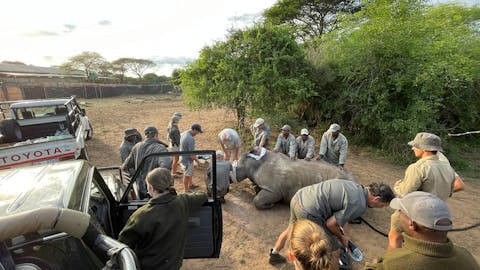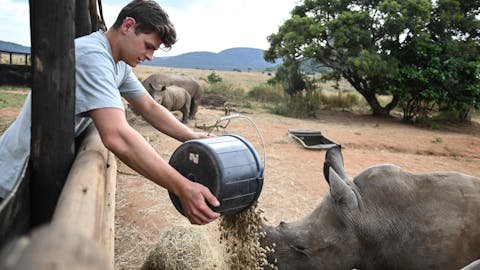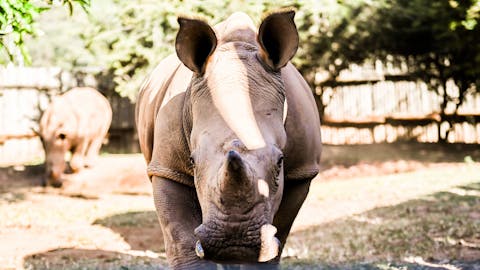Make it yours
Every experience is customised to be just right for you.
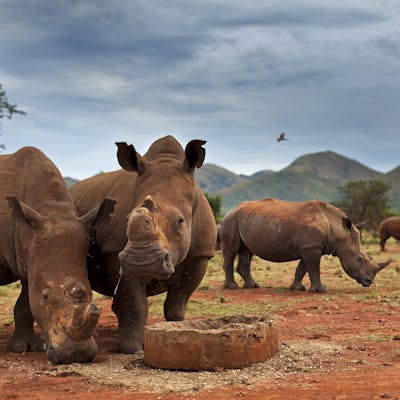
Stand with the rhinos. From orphan care to wildlife management.
When you volunteer with rhinos in Africa with African Conservation Experience, you step into the frontline of genuine rhino conservation. Whether you’re bottle-feeding a rhino calf orphaned by poachers, assisting with horn-trimming procedures used to protect rhinos from poaching, or taking part in the physical work involved in rhino relocation, these experiences place you at the heart of efforts to safeguard Africa’s rhinos.
Working hands-on and behind the scenes in leading rhino conservation projects, these rhino volunteer opportunities will enable you to get to know these elusive and misunderstood animals in a way few people ever do.
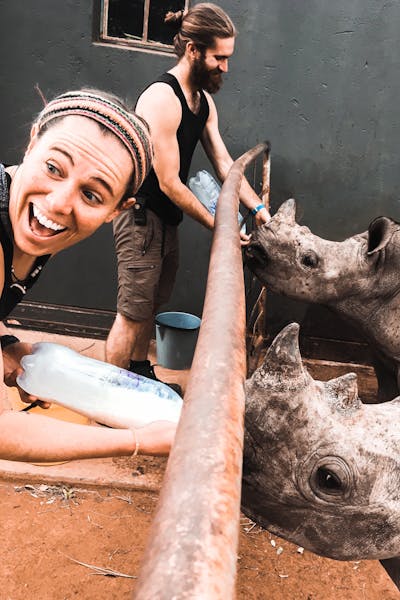
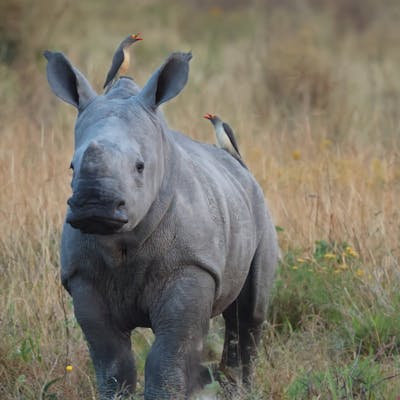
Explore what it means to be a rhino conservation volunteer.
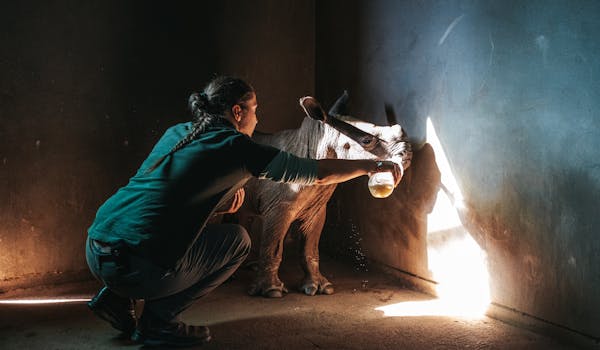
Experience daily life working with orphaned baby rhinos, supervised by a dedicated team of experts
View details for Golola Rhino Orphanage And Rehabilitation Centre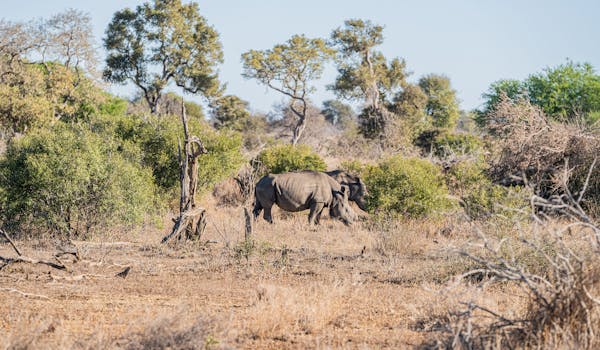
Accompanied by experts, learn about rhino in the field and care for orphaned rhino at a specialist centre
View details for Rhino Conservation Experience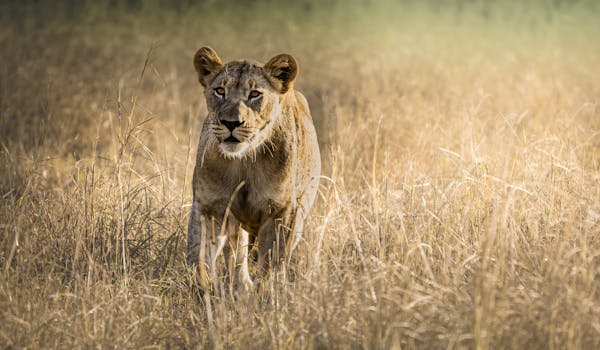
Go behind the scenes on a Big 5 reserve and join one of the biggest conservation success stories
View details for Phinda Wildlife Research Project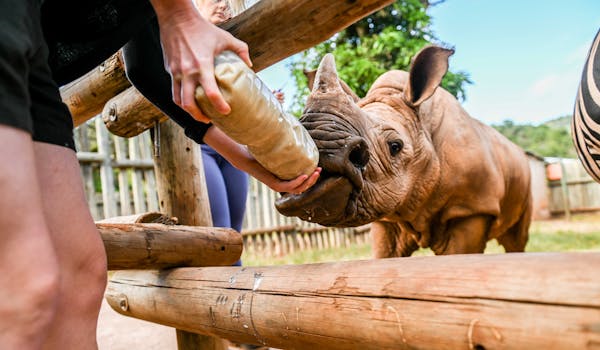
Help save the rhino at the largest specialist rhino care centre in Africa
View details for Care For Wild Africa Rhino Sanctuary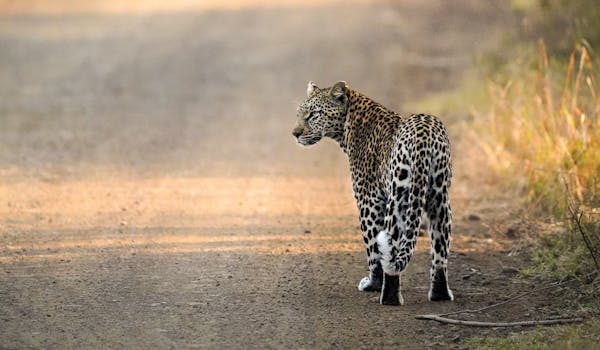
Get a unique behind the scenes experience in one of the largest and most important conservation areas in Africa
View details for The Vikela Kruger Conservation Experience
Photo of a volunteer identifying a rhino track
Africa’s rhino population faces a critical threat, with poaching as the primary cause of their decline, driven by the illegal trade in rhino horn. Rhinos are illegally hunted for the supposed medicinal qualities of the horn, when in fact, rhino horn is nothing more than keratin - the same material as human fingernails.
So, how do you stop rhino poaching? Well, conservationists working with rhinos in Africa have trialled many anti-poaching strategies over the years and one of the most effective is humane horn trimming. This veterinary procedure, where a rhino is sedated and its horn partly removed, helps to reduce the poacher’s incentive for killing the animal.
Humane horn trimming was first used as an anti-poaching strategy in Namibia during the early 1990s. During this original trial, no horn-trimmed rhinos were poached. Horn trimming went on to be adopted in Zimbabwe, and later on, South Africa, as an anti-poaching strategy.
While horn trimming programs have proved successful, in some locations poachers continued killing rhinos regardless of whether or not they had been trimmed. This is because horn trimming does not completely remove the horn, as this would be fatal to the animal, and some poachers are prepared to kill a rhino for the stump that remains after it has been trimmed.
As such, conservationists working with rhinos in Africa now understand that for horn trimming to be effective, it needs to be part of a holistic anti-poaching strategy. That means security, monitoring and education need to be put into action alongside a horn trimming program.
And rhino horn trimming may be part of an effective anti-poaching strategy, but it is far from perfect. Any surgical procedure carries a risk of harm or even death to the rhino, particularly when using strong sedative drugs. Rhino horn also grows back over time, meaning a rhino's horn needs to be trimmed on an ongoing basis. There is also the ethical question of whether or not it is right to remove a rhino’s horn, which they use to protect their young and in territorial battles, especially between males.
Finally, there is the price. It is estimated that each individual horn trimming costs over USD 1,000. This means that to horn-trim every rhino in South Africa would cost tens of millions of dollars. While you can’t put a price on the life of an animal, the reality is wildlife conservationists in Africa don’t have unlimited funds.
Despite these drawbacks, most wildlife conservationists working with rhino agree that, until a better strategy is found, the benefits of horn trimming greatly outweigh the risks.
Some game reserves in South Africa have successfully managed to increase their rhino populations through a program of skilful management, security and horn trimming. And now they’re sharing their success with other regions, by relocating rhinos in sufficient numbers to repopulate areas where they had been wiped out.
Our partner Phinda works closely with the WWF Black Rhino Range Expansion Project and other conservancies to establish rhino populations elsewhere in southern Africa. In conjunction with African Parks, they have translocated rhinos to repopulate Akagera National Park in Rwanda, Garamba National Park in the Democratic Republic of Congo, and were the first recipient of black rhinos as part of the rhino rewilding program of African Parks, and Vikela was also selected as a suitable site. Rhino sanctuary Care For Wild Africa and the Golola Rhino Orphanage and Rehabilitation Centre are also both working to secure viable breeding populations of rhino.
We are proud of our project partners and all of our passionate and determined rhino conservation volunteers who have directly contributed to the future of rhinos, through volunteering at a rhino orphanage in South Africa or monitoring rhinos in the field.
Early signs suggest that breeding and relocation, alongside a program of horn trimming, security and monitoring, offer a glimmer of hope for conservationists working to save the rhino and overall rhino conservation.
Even though rhino poaching is illegal in South Africa and carries a long-term prison sentence, poachers continue to kill rhinos in their thousands.
In the traditional medicine systems of some Asian countries, powdered rhino horn is believed to cure a variety of ailments from hangovers to cancer. However, there is no evidence that horns have any of their claimed medical properties. In fact, rhino horn is nothing more than keratin, the same material you’ll find freely available in your toenail and fingernail clippings or scattered on the floor during your next trip to the hairdresser.
The International Union for Conservation of Nature (IUCN) Red List of Threatened Species now categorises the black rhino as Critically Endangered.
Sadly, this means people in some parts of East Asia now buy rhino horns purely as a grotesque symbol of wealth, sometimes even using them to close business deals. This creates a vicious cycle of reduced supply and increased demand.
But it is worth pointing out again that this huge amount of money gains the buyer nothing more than a very large toenail (or nose nail to be more exact).
The vast majority of white rhinos are found in South Africa, making Kruger a real target for poachers. However, Zimbabwe, Namibia and Kenya also have large rhino populations and poaching gangs have taken a serious toll in these countries as well.
This high-profile act of violence and cruelty brought the rhino poaching crisis home to many animal rights activists across Europe.
The main threat to rhinos is poaching for their horns. Addressing this threat is the key to the conservation of rhinos. You can directly support rhino conservation efforts by caring for orphaned calves as part of their rehabilitation and release journey, or monitoring wild rhinos in the field, passing on critical data to anti-poaching teams.
We specialise in volunteering in southern Africa. Our rhino rehabilitation and research opportunities, and specialist rhino orphanage, are based in South Africa. You could visit a Single project or combine multiple locations to create an exciting Combined experience focused on rhino conservation in South Africa.
No experience necessary! Our rhino conservation projects are suitable for volunteers from all backgrounds.
Take the first step on your rhino volunteering journey by simply submitting an enquiry form. We offer volunteer work with rhinos for all experience levels and interests. You can find out more about how we take time to create a customised African Conservation Experience that’s just right for you here.
We can't wait to speak with you about the opportunities for rhino conservation volunteering in Africa!
